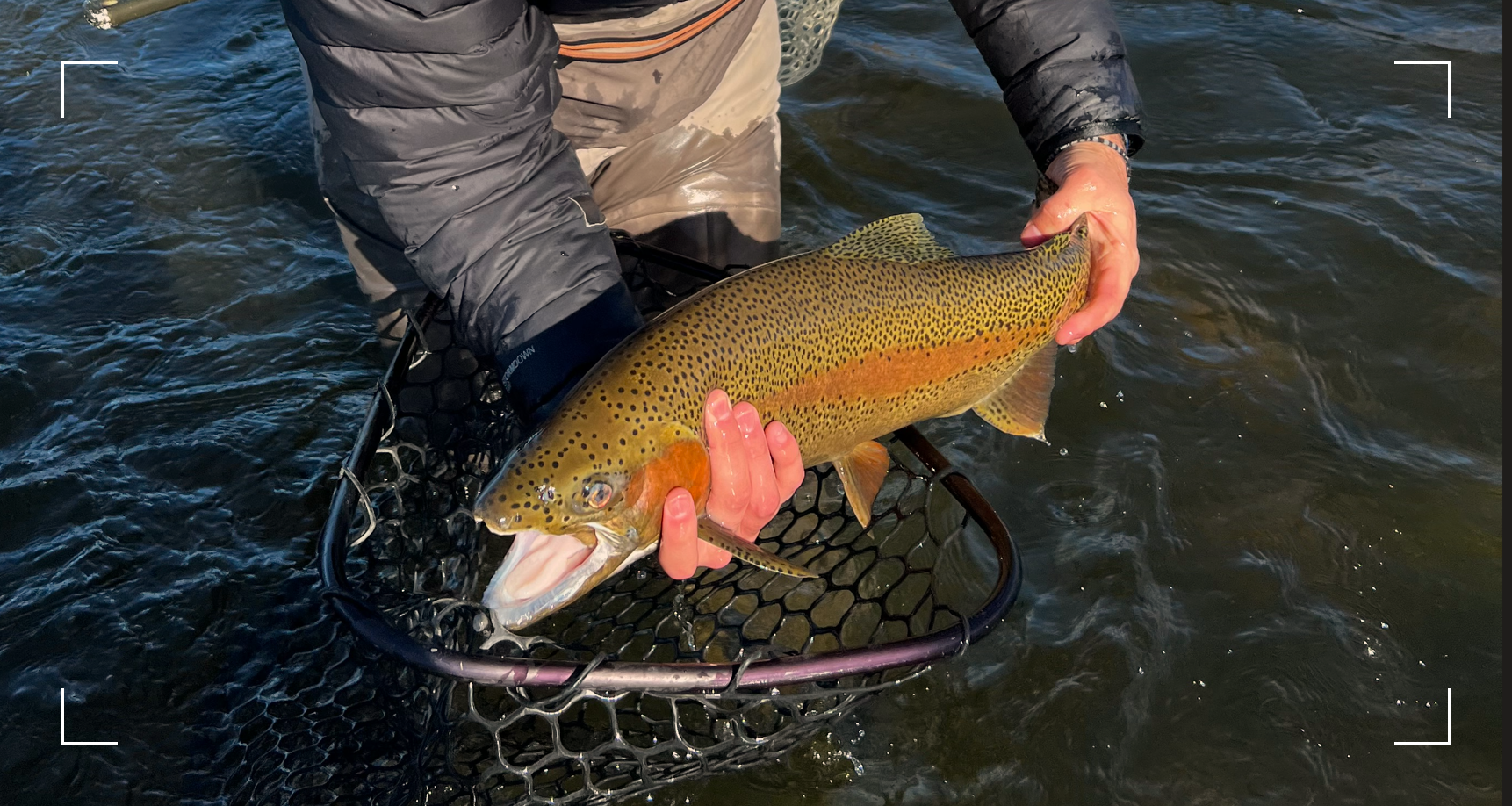The Double Tailwater Phenomenon
"Tailwater" is almost a mythical word in Western fly fishing. What about double tailwaters?

March 2023
“Tailwater” is almost a mythical word in fly fishing. The term elicits thoughts of large trout, stable flows, and year-round opportunity. The tailwater effect refers to an upstream dam releasing stored water from the bottom of the dam into downstream habitat which keeps stream temperatures cool during summer months and relatively warmer during winter months; this stability is what allows for ample biomass to bloom and support healthy fish populations. Midges and blue wing olives are tailwater staples and feed trout all year long. Scuds, sometimes mysis shrimp, and other invertebrate morsels provide a constant conveyor belt of river cheetos even in February when any respectable freestone trout is laying low. Plus, tailwaters often support higher densities of trout due to the abundance of food and optimal habitat. From an angling perspective, what’s not to love? But what if we doubled the number of tailwaters on a stretch of river? Could it be twice as good?
Yes!

The double tailwater phenomenon, as I call it, offers all the advantages of an upstream reservoir that control and regulate flows downstream while offering a host of advantages from the downstream reservoir as well. In spring and fall, trout from the lower reservoir make trips into the tailwater section to spawn. Spring rainbows offer anglers an early season shot of adrenaline that can only be matched by the brown trout spawning equivalent in fall. Under certain conditions, summer also offers opportunities for lake fish to move into the stream to search for optimal stream habitat from tailwater stretches as a break from the deeply stratified lake habitats. In a productive downstream reservoir, trout can really pack on the pounds. So when they finally make themselves available in the tailwater stretch, they are juicy river lunkers just waiting to bend your rod in half.
These networks, when operating smoothly, have garnered epic nicknames for the tailwaters sandwiched between the reservoirs.
Colorado’s Dream Stream section of the South Platte sits between (the upper) Spinney Reservoir and (the lower) Eleven Mile Reservoir.
Wyoming’s Miracle Mile section of the North Platte sits between (the upper) Seminoe Reservoir and (the lower) Pathfinder Reservoir.
Montana’s Land of the Giants is a section of the Missouri River between (the upper) Hauser Lake and (lower) Holter Lake.
Double Tailwater Traits
One noticeable trait that each of these systems shares is the short distance between the two reservoirs, and the size of the river between the two reservoirs. The Dream Stream only offers approximately 4 miles of stream, the Miracle Mile only offers 5 miles of stream, and the Land of the Giants offers less than 5 stream miles. Of course, these lengths depend on the amount of water available in the lower reservoirs, but all share the trait of fairly short tailwater sections. This is important to defining a double tailwater because the short length condenses running fish into a limited stretch of water, making them accessible targets for anglers. Each of these examples is found on the main stem of a major river or stream, and water is deep enough to support habitat for numerous large fish.
Another defining trait is the productivity of the lower lakes and reservoirs. These waterbodies need to be large enough or productive enough to nurture trout into migration-ready tanks. Elevation may play an important role in the productivity of these lakes/reservoirs, too.

Though each example here clearly has earned an epic reputation, it's unclear how common this geographic phenomenon really is. In reviewing the 50 Best Tailwaters to Fly Fish, I only uncovered 1 additional double tailwater system (4 total) from the 31 Western and Rocky Mountain tailwaters highlighted in the book. However, there are likely countless other systems out there with a similar topology if we broaden the search. Small systems, like streams connected via beaver dams, might operate similarly, though on a smaller scale; or, an upper reservoir that has a tailwater which connects to a larger river system where river fish can move upstream into the tailwater can also work in a similar fashion.
Whenever you set out to explore on Google Earth or read topo maps, always keep your eyes peeled for other examples of the Double Tailwater phenomenon and try them out. Chances are, you will be handsomely rewarded.



